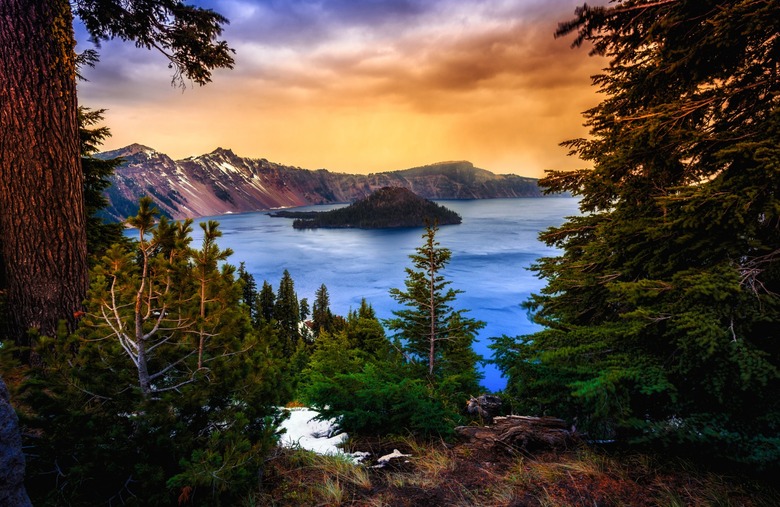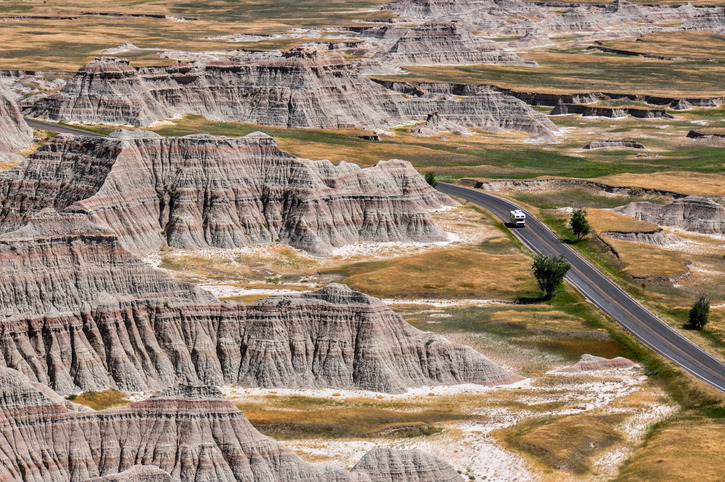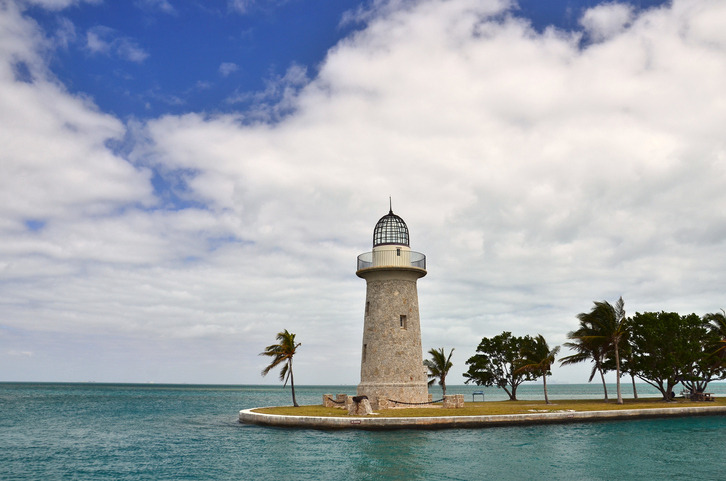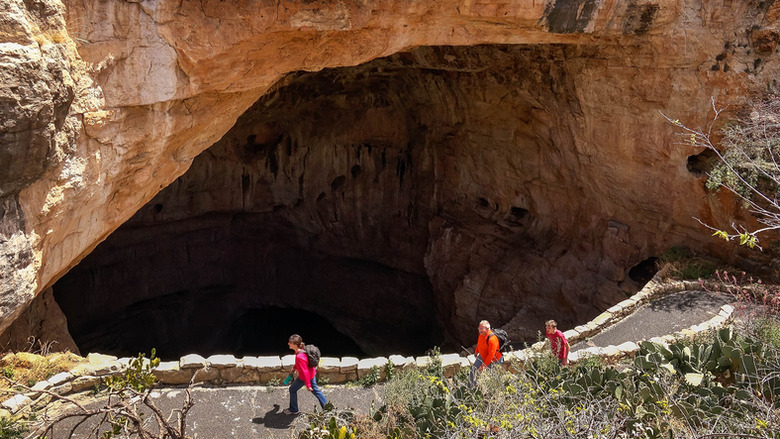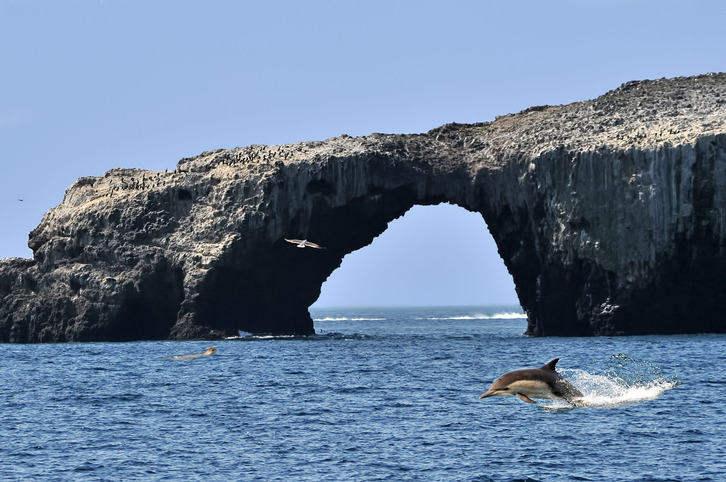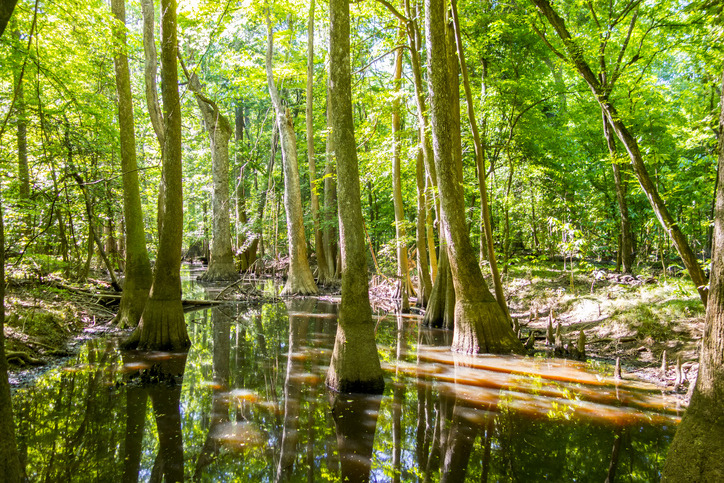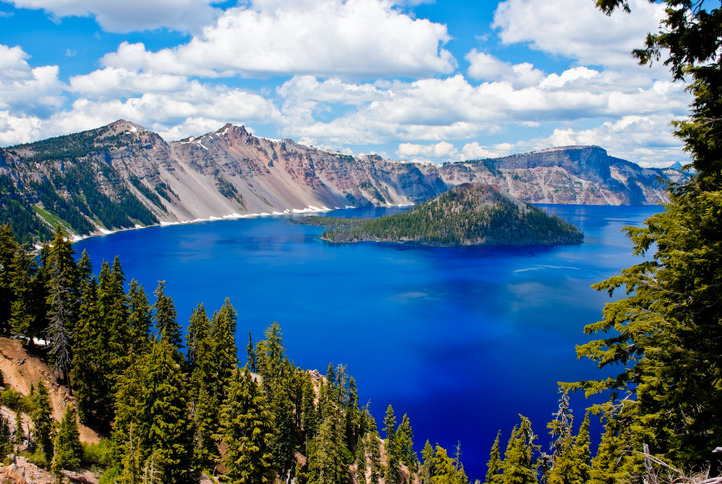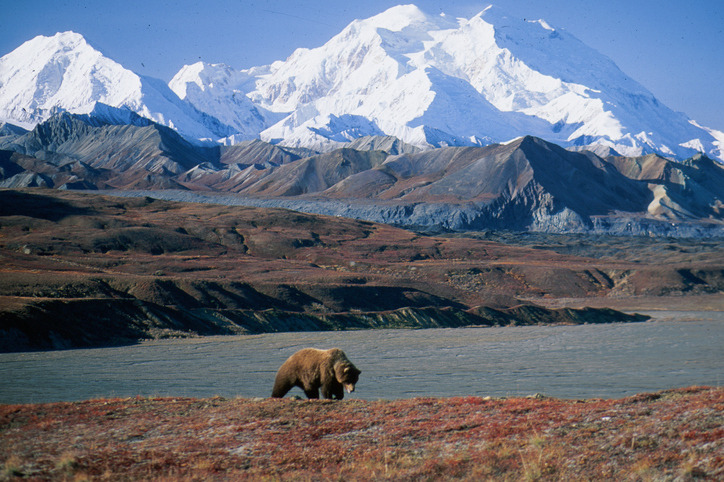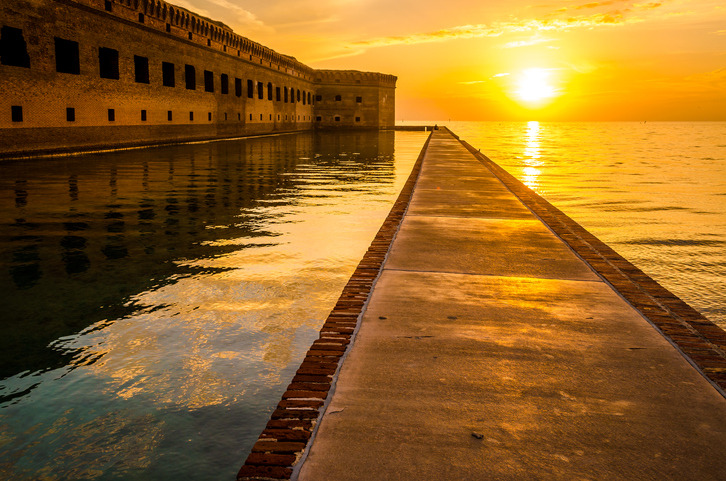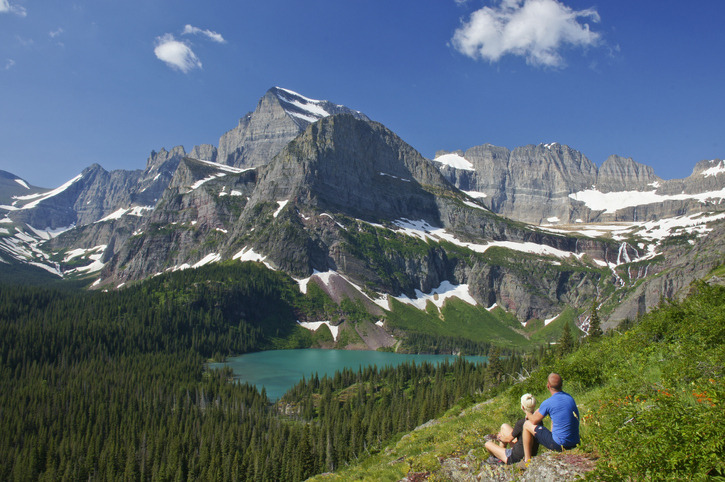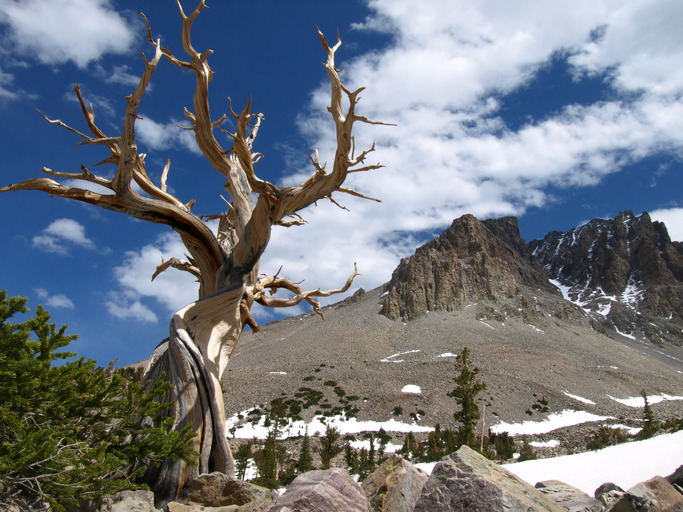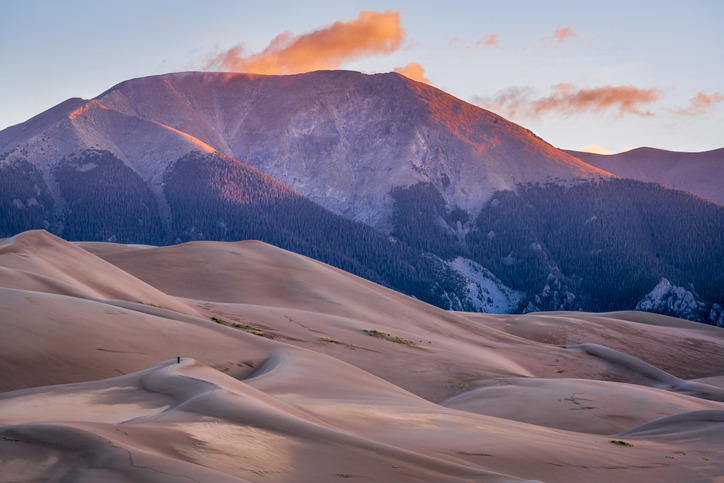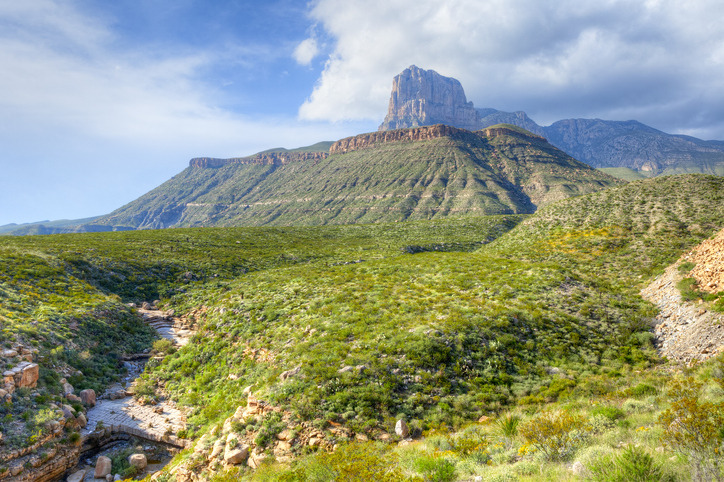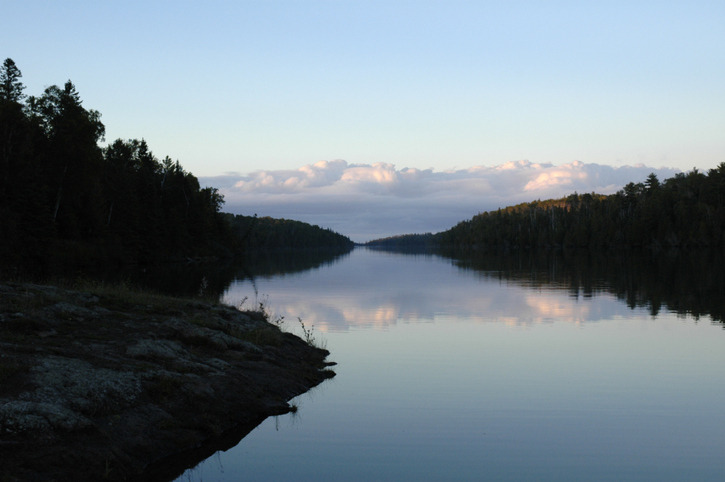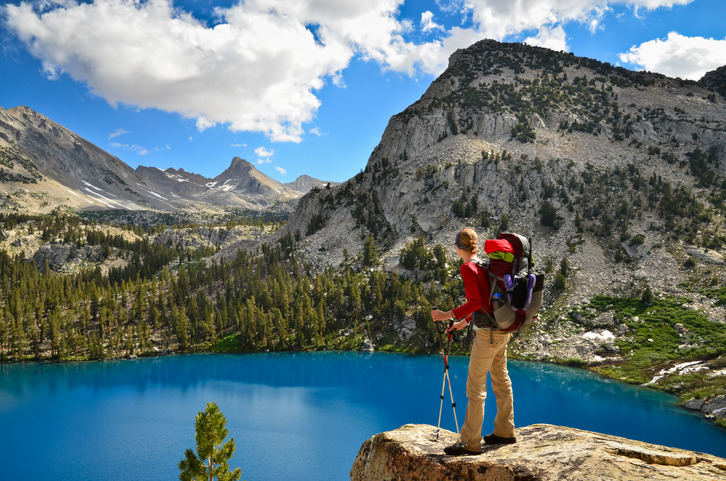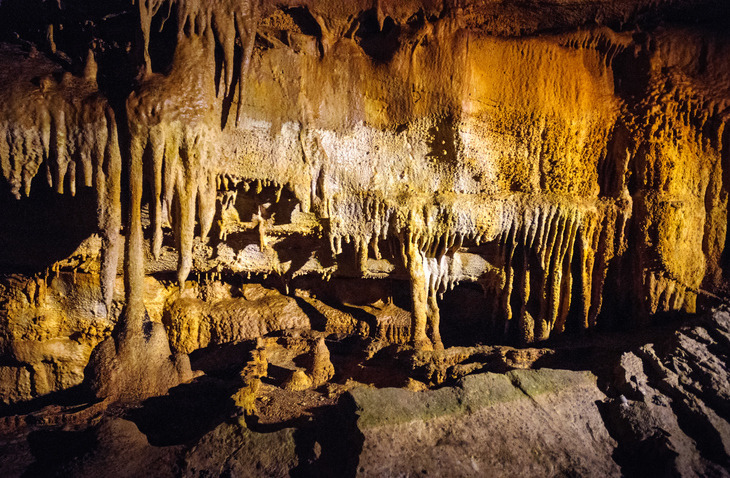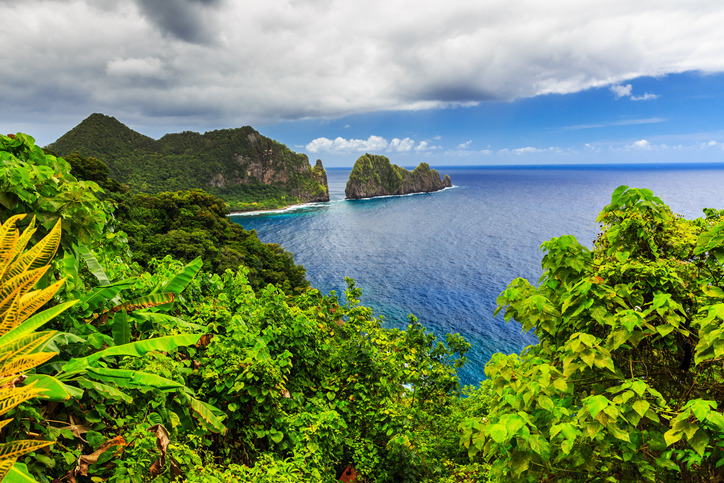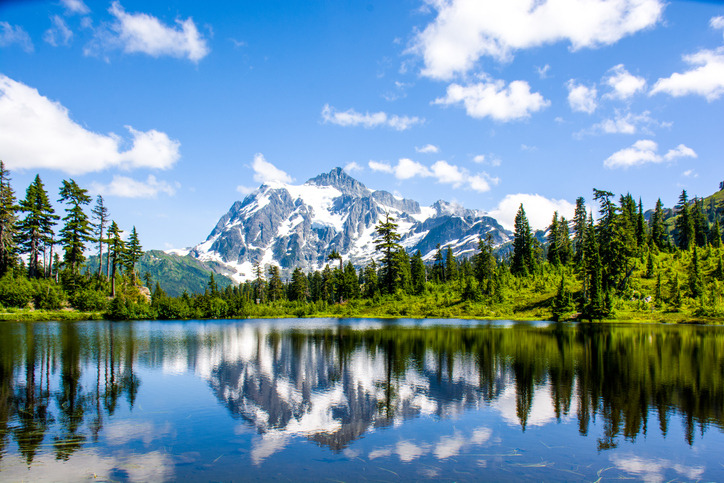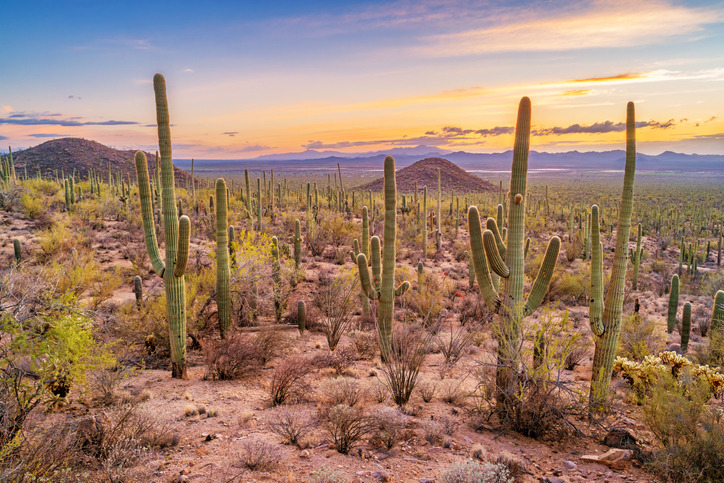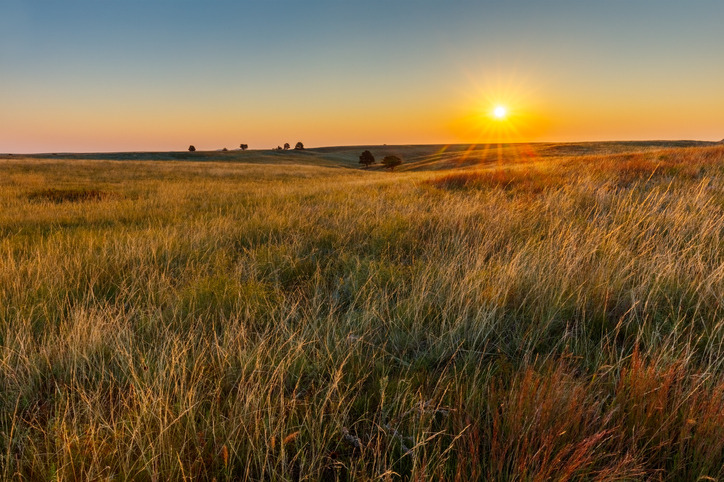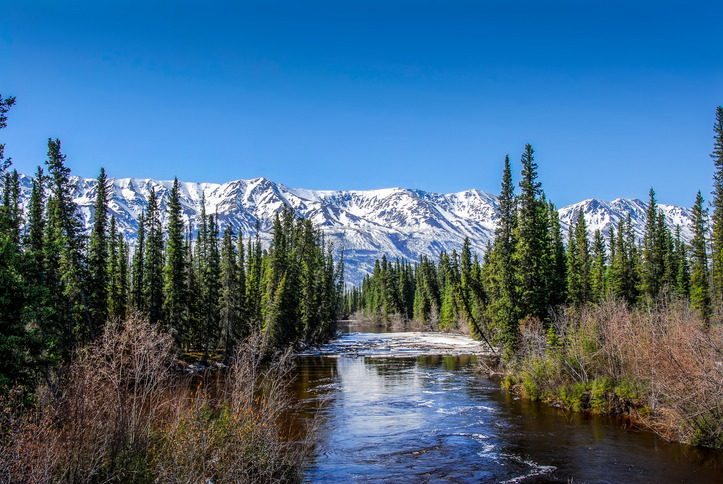The Most Underrated National Parks In America
Since the National Park Service was created in 1916 by President Woodrow Wilson, it has expanded to 418 sites, including 60 national parks, covering more than 84 million acres. Visiting a national park is a great way to enjoy the outdoors, reconnect with mother nature, learn about an area's natural history and more.
National parks span across the 50 states and cover different ecosystems from caves and coral reefs to deserts and swamps. No matter what kind of vacation you're looking for, a national park can provide it. You can sightsee at a leisurely pace or engage in adventure sports — it's up to you. Yosemite and Yellowstone might be household names, but there are dozens of other lesser-known national parks. To enjoy the benefits of a national park vacation without the crowds, check out these breathtaking, off-the-beaten-path national parks.
Badlands National Park
South Dakota's Badlands National Park might seem pretty monotonous with its 244,000 acres of prairie. Though it doesn't have mountains or rivers, the rugged area is rich for exploring, making it perfect for backpacking or backcountry camping. The canyons, ridgelines and peaks have an otherworldly, alien-like feel, and the labyrinthine landscape evolves as the sunlight brings out its different colors.
Biscayne National Park
Florida's Biscayne National Park is only 5 percent land and is the country's largest marine park. Its lagoons and coral reefs are filled with vibrant marine life, including sea turtles and dolphins. Boating, canoeing and kayaking as well as snorkeling and scuba diving are all ways to explore the park. You can also stay overnight and enjoy a scenic sunrise or sunset from Boca Chita campground.
Carlsbad Caverns National Park
Carlsbad Caverns National Park in New Mexico's Chihuahuan Desert proves that sometimes it's what's inside that counts. The park is home to the largest caves in North America and some of the oldest in the world. Visitors take a one-minute elevator ride that descends 754 feet to begin a tour of the cave's dazzling rooms and formations. From April to September, the caves are home to hundreds of thousands of Mexican free-tailed bats, and you can sit in an amphitheater outside the cave entrance to watch them emerge en masse at dusk.
Channel Islands National Park
Channel Islands National Park is made of five islands off the southern coast of California. They're the perfect place to escape the hustle and bustle and revel in wildflowers, beaches, cliffs, caves and canyons. With its lack of paved roads or permanent residents, the pristine park has earned the nickname "America's Galapagos." There's abundant opportunity to see local wildlife, including seals, sea lions, humpback whales and dolphins.
Congaree National Park
South Carolina's only national park, Conagree National Park is home to the "largest intact expanse of old growth bottomland hardwood forest remaining in the southeastern United States," according to the National Park Service. Conagree is a lush, fantastical backcountry park with a unique atmosphere thanks to its swamps, Spanish moss and knobby cypress trees. Hike under some of the world's tallest natural canopies or take a ranger-guided night tour to hear owls and see glowing fungi and synchronous fireflies.
Crater Lake National Park
An underrated U.S. national park compared to Yellowstone or Yosemite, Crater Lake National Park in Oregon has the deepest lake in the United States. Its depth, along with the fact that it's filled almost entirely by snowfall and not much else, makes it one of the clearest, bluest lakes anywhere in the world. The park is a great backdrop for snowshoeing, cross-country skiing and snowmobiling in the winter and hiking, biking and more.
Denali National Park and Preserve
Denali, formerly known as Mount McKinley, in Alaska is the highest mountain peak in North America. When measured from base to peak, it is the tallest mountain on Earth, beating out Mount Everest by about 6,000 feet. One of the "Seven Summits," it is a must-climb for mountaineers. The national park surrounding it is a wonderful place to go dogsledding, hiking and wildlife spotting as well as to try and see the magnificent northern lights.
Dry Tortugas National Park
Dry Tortugas National Park is 100 square miles of mostly open water with seven small islands. The park's main icon is Fort Jefferson but there's so much to enjoy in the water, such as snorkeling and scuba diving in the park's clear blue waters and coral reefs as well as empty beaches to enjoy.
Glacier National Park
One of the country's most beautiful national parks, Glacier National Park attracts millions of visitors a year but still doesn't have the same must-see reputation as Yellowstone, the Grand Canyon, the Great Smoky Mountains or Zion. The park has pristine forests, incredible mountains and spectacular lakes. You can see its many stunning sights on hikes or scenic drives like the famous Going-to-the-Sun Road. For the adventure-inclined, you can even go ice climbing on a glacier.
Great Basin National Park
Many people heading West go straight to the Grand Canyon, but they're missing out on Nevada's Great Basin National Park. This area is a beautiful natural playground for wildflower viewing, birdwatching, camping, climbing, fishing, horseback riding and more. The park even has limestone caverns and a small glacier but very few annual visitors, so you can enjoy the serenity of the scenery.
Great Sand Dunes National Park
In Colorado's Great Sand Dunes National Park, you can hike the tallest dunes in North America, with some as high as 750 feet. Try your hand at sandboarding, four-wheeling and stargazing in this monumental sandbox. You can also splash in Medano Creek, watch wildlife, camp and more.
Guadalupe Mountains National Park
Guadalupe Mountains National Park in Texas was once underwater and part of an elaborate coral reef. Now, the park's canyons, mountains and conifer forests dramatically rise up from the desert landscape. Explore the area's 80 miles of trails, including a beautiful hike to Guadalupe Peak, the highest point in Texas.
Isle Royale National Park
Isle Royale is an isolated 207-square-mile island in Lake Superior. It and 450 smaller islands comprise Isle Royale National Park, which is only accessible by boat or seaplane. Annual visitors are in the thousands instead of millions, meaning you're likely to experience uninterrupted solitude in peaceful natural surroundings. Visit Rock Harbor Lighthouse or hike the 165 miles of trails, including paths along a historic copper mine. You can even go scuba diving and explore the most intact collection of shipwrecks in the NPS.
Kings Canyon National Park
Kings Canyon National Park has a similar landscape to Yosemite but is much less visited. The park is home to the deepest canyon in the United States and the General Grant tree, the second largest tree in the world and officially designated as "The Nation's Christmas Tree." See other giant sequoia groves, explore Boyden Cave and more.
Mammoth Cave National Park
Mammoth Cave National Park in central Kentucky is home to the longest known cave system in the world. The caves go from narrow tunnels you have to crawl through to cathedral-like caverns dripping with stalactites. Apart from the caves, the national park includes ample grounds for hiking, biking, horseback riding, canoeing and kayaking.
National Park of American Samoa
You don't need a passport to visit this tropical South Pacific destination that also happens to be a national park. American Samoa is home to the only U.S. national park south of the equator. Established in 1988, this park's 13,500 acres span three islands and includes mountains, rain forests, beaches, open ocean and coral reefs. The park also has a unique homestay program in which visitors can stay with a Samoan family and participate in village activities and customs.
North Cascades National Park
Washington's North Cascades National Park is one of the least-visited national parks in the country, meaning you'll have more of the real estate in the sprawling, diverse park to yourself. The mountains are nicknamed America's Alps, and on top of providing more than 400 miles of hiking trails and a top destination of mountaineering, they also create numerous dazzling waterfalls and alpine lakes.
Saguaro National Park
Saguaro National Park outside Tucson, Arizona, is perhaps the best place in the country to experience the park's namesake saguaros as it's home the nation's largest cacti. Hike the park's more than 150 miles of hiking trails or camp in the Sonoran Desert among dense saguaro forests and unique wildlife such as coatis, Gila monsters and javelinas.
Wind Cave National Park
This national park in South Dakota is named after one of world's longest and most intricate cave systems, which was the first cave in the world to be designated a national park. On top of exploring the cave's unique formations, you can also spot native wildlife such as bison, elk and pronghorn in the largest remaining natural mixed-grass prairie in the United States.
Wrangell-St. Elias National Park
Wrangell-St. Elias is actually America's largest national park, spanning 13.2 million acres of Alaskan wilderness. That's almost six times the size of Yellowstone. The park includes coastal cliffs, tundra, glaciers, rivers, majestic mountains and some of the largest volcanoes in North America. There are more than 150 glaciers and nine of the 16 highest peaks in the United States. Take on challenging outdoor adventures from hiking to glacier skiing among the perfect backdrop in one of the most beautiful national parks in the world.
More From The Active Times:
Top RV Destinations in North America
Why You Need to Plan Your Summer Vacation Now
How to Avoid Big Summer Crowds in National Parks
Visit These American Gems Before the Word Gets Out
Travel Experts Rank the Best National Parks From Good to Amazing
